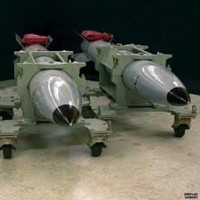At its Chicago summit, NATO reaffirmed its commitment to its European-based arsenal of tactical nuclear weapons. In an email interview, Paul Schulte, a nonresident senior research fellow at Carnegie Europe and Carnegie Nuclear Policy and a visiting senior research fellow at the Center for Science and Security Studies at Kings College, discussed NATO’s nuclear weapons.
WPR: What is the current size and scope of NATO's nuclear weapons?
Paul Schulte: Some 160-200 U.S. B61 gravity bombs are understood to be deployed in Europe and Turkey, the remains of the alliance’s Cold War arsenal of 7,000 nonstrategic nuclear weapons (NSNWs). They are often called “NATO’s nuclear weapons," although the latest alliance Strategic Concept states that “The supreme guarantee . . . of security . . . is provided by the strategic nuclear forces” of the U.S., France and U.K., which are collectively much larger. The unique feature of NATO's European NSNWs is the system of "nuclear sharing," allowing nonnuclear allies to participate in nuclear planning and providing for certain NATO European air forces (currently Germany, Belgium, Netherlands and Italy) to deliver the B61s from their dual-capable aircraft (DCAs). The NSNWs’ value is contested, but proponents believe they strengthen the trans-Atlantic link with the U.S. strategic deterrent. This is of special importance to some Central and East European countries. Partly due to their concerns, present NSNW arrangements were confirmed at NATO's 2012 Chicago Summit, pending hoped-for negotiations to achieve reciprocal reductions in Russia's estimated arsenal of 3,700-5,400 NSNW.

